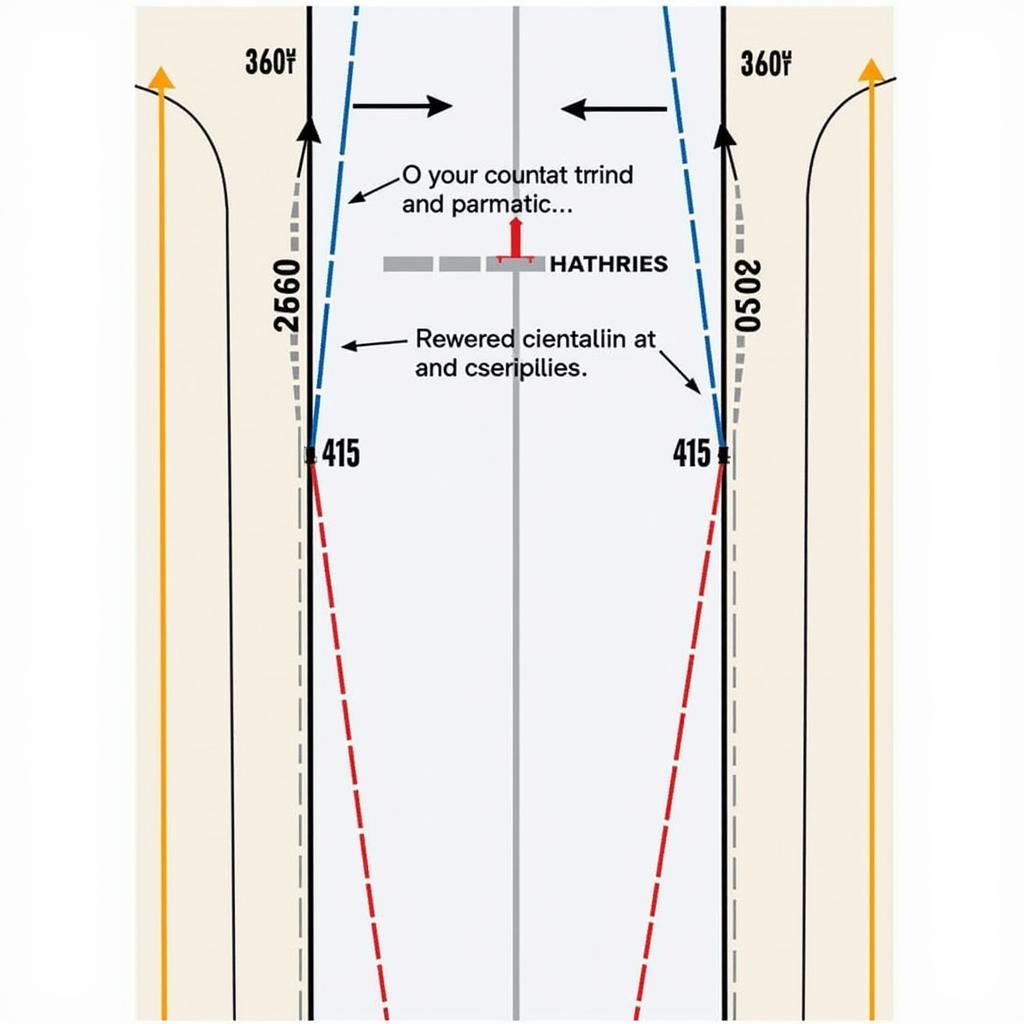The 4b8 Airport Diagram is a crucial tool for pilots and aviation enthusiasts alike. It provides a detailed visual representation of an airport’s layout, including runways, taxiways, aprons, and other important features. This article dives deep into the importance and components of a 4b8 airport diagram, offering valuable insights for anyone interested in aviation.
Decoding the 4b8 Airport Diagram: A Pilot’s Perspective
Airport diagrams, like the 4b8, are essential for safe and efficient airport operations. They serve as a roadmap for pilots, guiding them from the runway to the gate and vice-versa. Understanding the symbols, markings, and information presented on a 4b8 diagram is paramount for pilots navigating the complex environment of an airport.
Key Components of a 4b8 Airport Diagram
A standard 4b8 airport diagram includes several key elements:
- Runways: Clearly marked with their designations, lengths, and widths.
- Taxiways: Designated routes for aircraft to move between runways and aprons.
- Aprons: Designated areas where aircraft park, load, and unload passengers or cargo.
- Signage: Visual aids that provide directions and information to pilots.
- Lighting: Information about the airport’s lighting system, crucial for night operations.
- Obstacles: Potential hazards like buildings or antennas marked to ensure safe navigation.
- Frequencies: Communication frequencies used by pilots to contact air traffic control.
 4b8 Airport Diagram Runway Markings: Detailed view of runway markings, including thresholds, centerlines, and designations, as depicted on a standard 4b8 airport diagram.
4b8 Airport Diagram Runway Markings: Detailed view of runway markings, including thresholds, centerlines, and designations, as depicted on a standard 4b8 airport diagram.
Why is the 4b8 Airport Diagram Important?
The 4b8 airport diagram plays a vital role in numerous aspects of aviation:
- Flight Planning: Pilots use the diagram to plan their taxi routes and understand the airport layout before arrival.
- Safe Navigation: It helps pilots avoid collisions and navigate complex taxiway systems, especially in unfamiliar airports.
- Emergency Procedures: The diagram provides crucial information for emergency response and evacuation procedures.
- Ground Operations: Airport personnel use the diagram for ground handling, maintenance, and other operational activities.
How to Read a 4b8 Airport Diagram
Interpreting a 4b8 airport diagram effectively requires understanding the standardized symbology used:
- Solid lines: Represent runways and taxiways.
- Dashed lines: Indicate holding positions and other non-movement areas.
- Circles: Denote specific locations, such as navigation aids or intersections.
- Arrows: Show the direction of traffic flow.
4b8 Airport Diagram and Flight Simulation
4b8 diagrams are not just for real-world pilots; they are also valuable tools for flight simulation enthusiasts. They provide a realistic representation of airport environments, enhancing the simulation experience and allowing users to practice navigating various airports.
Utilizing 4b8 Diagrams in Flight Training
Flight schools often use 4b8 diagrams as training aids to familiarize student pilots with airport layouts and procedures. This practice helps build confidence and preparedness for real-world flying.
“A thorough understanding of 4b8 diagrams is fundamental for any aspiring pilot,” says Captain John Smith, a veteran commercial pilot with over 20 years of experience. “It’s the first step towards safe and efficient airport operations.”
Conclusion: The Essential Role of the 4b8 Airport Diagram
The 4b8 airport diagram is a fundamental tool for anyone involved in aviation, from professional pilots to flight simulation enthusiasts. Its detailed representation of airport layouts and features is essential for safe, efficient, and informed operations. Understanding the 4b8 airport diagram is not just about reading a map; it’s about ensuring safety, efficiency, and smooth operations within the complex ecosystem of an airport.
“Using the 4b8 diagram effectively is like having a local guide at a new airport,” adds Amelia Johnson, a certified flight instructor. “It helps you navigate with confidence and avoid potential pitfalls.”
Need further assistance? Please contact us at Phone: +13089626264, Email: [email protected] or visit our office at 404 Bothwell St, Oxford, NE 68967, USA. Our customer service team is available 24/7.

